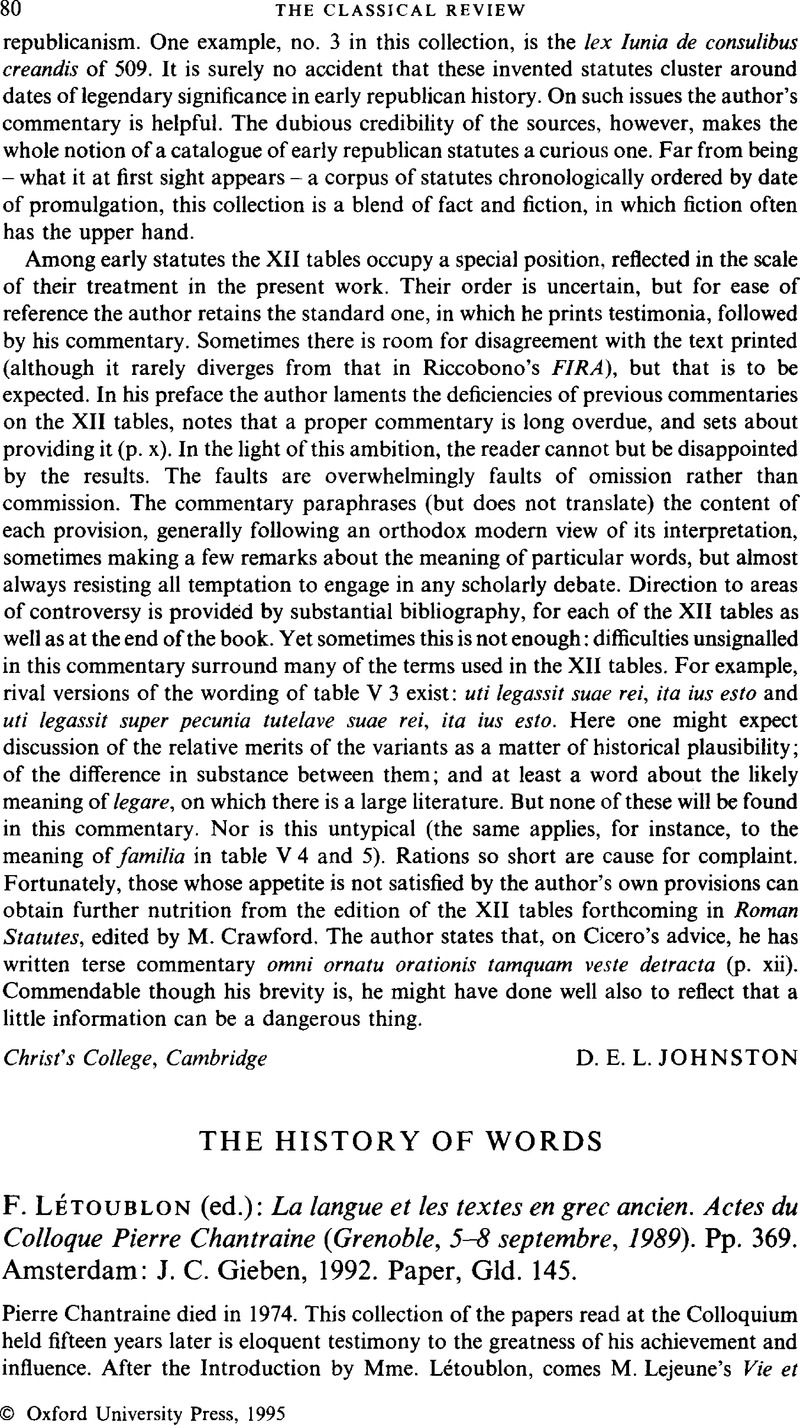No CrossRef data available.
Published online by Cambridge University Press: 16 February 2009

1 Watkins, C., ‘À propos de μ脴νις’, BSL 72 (1977), 187–209.Google Scholar
2 Turpin, J.-., ‘Un prétendu tabou linguistique de la langue épique’ in Logopédies: Mélanges de Philologie et de Linguistique grecques offerts à Jean Taillardat (Paris, 1988), 247–260.Google Scholar
3 Patrick Considine, ‘The etymology of μ脴νις’, Studies in Honour of T. B. L. Webster, edited by J. H. Betts, J. T. Hooker and J. R. Green, (1986), 53–64.Google Scholar‘The Indo-European origin of Greek mênis ‘wrath’, Transactions of the Philological Society 1985, 144–70.Google Scholar
4 Mykenaika, , Actes du IXe Colloque international sur les textes mycéniens et égéens, ed. Olivier, J. P. (Paris, 1992), 19–56.Google Scholar
5 The common practice of writing Myc. damo, rawaketa etc. is open to the serious objection that it makes syllabic writing look alphabetic. At least for non-specialist publications, it would be better practice to write either ra-wa-ke-ta or *lāwāgétās or both. The form lawo is a hybrid, neither orthographic *ra-wo nor phonetic *lāwós. For the meaning of λαός cf. Hooker, J. T., ‘Titles and functions in the Pylian state’, Studies in Mycenaean and Classical Greek presented to John Chadwick (= Minos 20–22, Salamanca, 1987), 257–67 (p. 262).Google Scholar
6 See also Clackson, James, The linguistic relationship between Armenian and Greek (Oxford: Blackwell, 1994).Google Scholar
7 Her work on the phonetics of the borrowings is reviewed by Penney, J. H. W. in CR 43, (1993), 320–321.Google Scholar
8 Sic in all seven occurrences for ktístēs kaì oikistēs as in the Greek text.
9 Chadwick, John, ‘The semantic history of Greek έσхάρα’, o-o-pe-ro-si: Festschrift für Ernst Risch (Berlin, 1986), 515–523.Google Scholar‘The case for replacing Liddell and Scott’, BICS 39 (1994), 1–11.Google Scholar
10 Renehan, Robert, Greek lexicographical notes: a critical supplement to the Greek–English lexicon of Liddell–Scott–Jones (Göttingen, 1975 = Hypomnemata 45), p. 8.Google Scholar